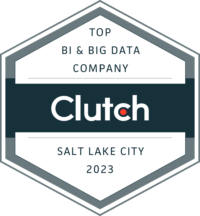Welcome back to the AdMind Analytics podcast! As we delve deeper into our exploration of data organization, we focus on a pivotal skill every digital marketer must master: data categorization. Having previously outlined the basics and challenges associated with managing extensive marketing data, today we offer a detailed guide to mastering data categorization—crucial for any digital marketer dedicated to making informed, strategic decisions.
Data categorization transcends mere efficiency; it’s about transforming raw data into a formidable tool that elevates your marketing strategies. Through mastering effective categorization techniques, you gain the ability to unlock profound insights into customer behaviors and fine-tune your marketing tactics to better meet their needs.
Join us as we dissect the steps and considerations vital for structuring your marketing data into useful categories, aiming to empower you with the knowledge to apply these insights and achieve specific marketing objectives.
The Art of Data Categorization: Simplifying Complex Data

Understanding data categorization is paramount. It involves a deep appreciation of the available data and its specific applications within marketing contexts. For marketers, the process begins with identifying the diverse types of data requiring organization, such as traffic sources, user demographics, content engagement, and product interactions—common starting points that provide foundational insights for strategic planning.
Effective categorization strategies enable you to:
Segment Data by Type: Organize users based on their interactions—whether through social media, website visits, or email engagements, providing a structured analysis of engagement channels.
Group Data by Outcome: Classify data according to the results it yields, such as leads generated, sales achieved, or customer feedback, to measure direct outcomes of marketing efforts.
Arrange Data by Campaign: Evaluate the effectiveness and ROI of marketing initiatives by categorizing data related to specific campaigns, enabling targeted analysis and optimization.
Well-categorized data not only streamlines the analytical process but also significantly enhances your capacity for rapid, informed decision-making. This approach fosters a system that is both intuitive and practical, making data readily accessible and actionable for your team.
Why Categorization Matters: Enhancing Decision-Making in Marketing

Effective data categorization does more than organize—it transforms data into a dynamic tool that significantly enhances decision-making capabilities. Thoughtful categorization allows marketers to respond swiftly and accurately to evolving market conditions and consumer behaviors, thereby optimizing marketing strategies in real time.
Key Benefits of Effective Data Categorization:
Improved Targeting and Personalization: Customize campaigns to meet the unique needs and interests of different audience segments, enhancing engagement and optimizing marketing spend.
Streamlined Analytics and Reporting: Efficiently identify trends, pinpoint successful tactics, and replicate success across various channels, reducing time spent on data manipulation.
Enhanced Responsiveness to Market Trends: Adapt strategies promptly to capitalize on opportunities or mitigate risks as market dynamics change.
Facilitated A/B Testing and Optimization: Simplify the setup and analysis of A/B tests, ensuring that enhancements are grounded in robust, data-driven insights.
Support for Advanced Data Techniques: Utilize sophisticated analytical methods, such as predictive analytics and machine learning, to forecast trends and model potential marketing scenarios.
Practical Examples of Data Categorization: Implementing Strategic Insights

Applying theoretical concepts through practical examples can transform abstract ideas into tangible strategies.
Here’s how marketers can practically apply data categorization:
Traffic Source Segmentation: Optimize marketing efforts by precisely understanding which channels yield the most valuable traffic and conversions.
Customer Demographics and Behavior: Customize marketing messages and promotions to align with the specific characteristics and preferences of distinct customer segments.
Content Engagement Levels: Shape future content strategies by analyzing which content types achieve the highest engagement, guiding content development and distribution efforts.
Product Interaction Categorization: Adjust product strategies and promotional activities based on detailed analysis of customer interactions with different products.
Campaign Performance: Scrutinize the success of campaigns and elements to identify what to replicate or scale, as well as areas requiring enhancement or discontinuation.
Advanced Categorization Techniques: Refining Data for Deeper Insights

Advanced categorization techniques delve deeper into data to uncover hidden patterns and strategic opportunities for optimization:
Time-Based Segmentation: Uncover trends and plan more effectively by segmenting data according to seasonality, time of day, and specific marketing events.
Multi-Dimensional Categorization: Enhance insights by combining multiple data dimensions, such as geographic and behavioral data, to form a richer understanding of consumer interactions.
Predictive Categorization: Employ historical data to anticipate future behaviors and tailor marketing efforts to likely future scenarios.
Sentiment Analysis: Analyze customer feedback to adjust marketing strategies promptly and address concerns, enhancing customer satisfaction and loyalty.
Cohort Analysis: Observe how specific customer groups evolve over time to refine customer lifecycle and retention strategies.
Integrating Sales and Marketing Data: Bridging the Gap for Better Insights

Integrating sales and marketing data offers a holistic view of customer journeys, enhancing the effectiveness of overall business strategies. This convergence allows for:
Enhanced Lead Qualification: Refine lead scoring models to better predict which leads are likely to convert, enhancing sales efforts.
Improved Marketing ROI: Allocate marketing budgets more effectively by understanding the direct sales impact of specific marketing activities, optimizing resource allocation.
Seamless Customer Experience: Ensure consistent messaging and experiences across all customer touchpoints, strengthening brand relationships.
Data-Driven Decision Making: Make more informed strategic decisions by considering the full spectrum of customer interactions, enhancing strategic alignment.
Targeted Content and Campaigns: Tailor future marketing initiatives based on detailed insights about what drives sales, optimizing marketing effectiveness.
The Future of Data Utilization in Marketing: Trends and Predictions

As we look to the future, data’s role in marketing is poised to become even more integral and sophisticated. Trends to watch include:
Increased Emphasis on Privacy and Data Security: As privacy concerns grow and regulations tighten, marketers must prioritize ethical data practices and compliance.
Artificial Intelligence and Machine Learning: These technologies will further personalize marketing and automate complex decision-making processes.
Integration of IoT Data: Emerging IoT technologies will provide deeper consumer insights, enhancing personalized marketing strategies.
Real-Time Data Processing: Develop capabilities to react to data in real-time, elevating customer engagement and responsiveness.
Voice and Visual Search Optimization: Adapt SEO and content strategies to accommodate rising voice and visual search usage.
Staying informed about these trends and continuously adapting data strategies are essential for maintaining a competitive edge in the evolving landscape of digital marketing.











